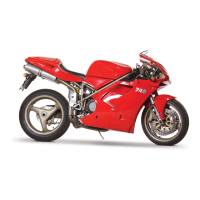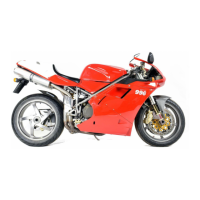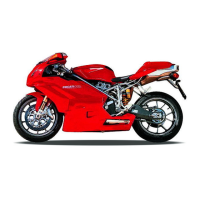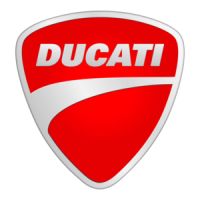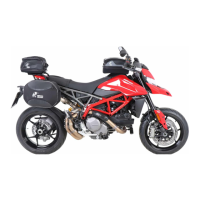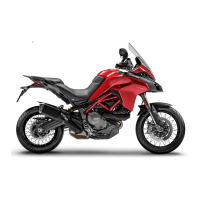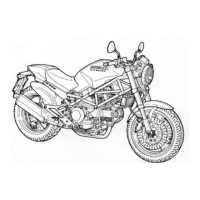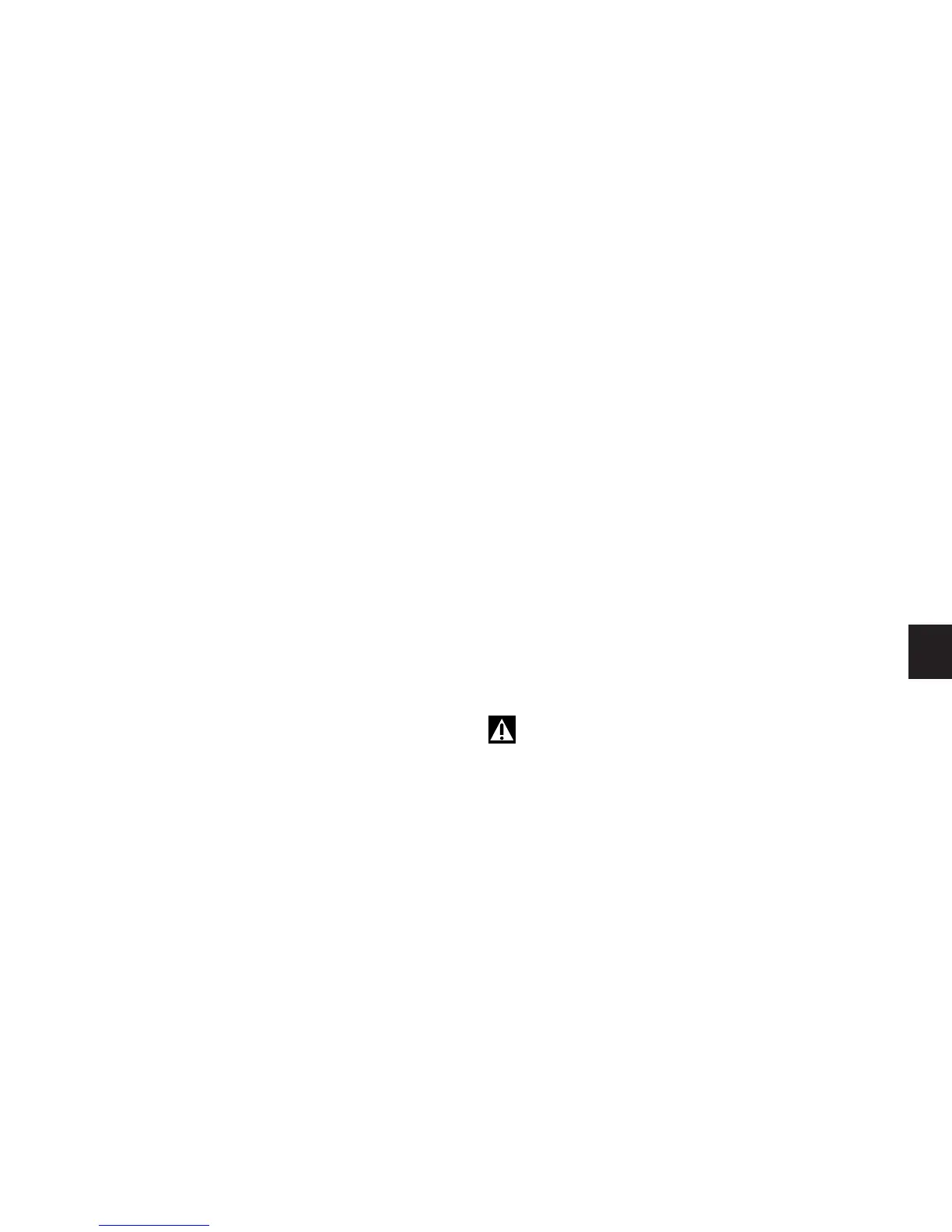 Loading...
Loading...
Do you have a question about the Ducati 999 and is the answer not in the manual?
| Compression Ratio | 11.4:1 |
|---|---|
| Transmission | 6-speed |
| Fuel Tank Capacity | 15.5 l (4.1 US gal) |
| Rear Suspension | Progressive linkage with fully adjustable Showa monoshock |
| Front Brakes | 2 x 320 mm discs, 4-piston calipers |
| Rear Brakes | 240 mm disc, 2-piston caliper |
| Tire Front | 120/70 ZR 17 |
| Tire Rear | 190/50 ZR 17 |
| Engine Type | L-Twin cylinder, 4 valves per cylinder Desmodromic |
| Bore x Stroke | 100 mm x 63.5 mm |
| Power | 104 kW (141 hp) @ 9750 rpm |
| Torque | 110 Nm (81.4 lb-ft) @ 8000 rpm |
| Front Suspension | Showa 43 mm upside-down fork, fully adjustable |
Details warranty coverage and limitations for the motorcycle.
Explains warning symbols and provides essential safe riding guidelines.
Information on the motorcycle's maximum load and weight distribution.
Locating frame and engine identification numbers for the motorcycle.
Diagram and description of motorcycle control positions.
Overview of the instrument panel indicators and LCD functions.
Details on the anti-theft immobilizer system, keys, and code card.
Operation of the ignition switch, steering lock, and parking light.
Functions of left and right handlebar switches, levers, and throttle.
Description of front brake, rear brake, and gear change controls.
Instructions for adjusting gear change and rear brake pedal positions.
Diagram identifying major motorcycle components and their positions.
Procedures for accessing fuel tank, seat, and helmet hook.
Details on side stand, steering damper, and fork/shock absorber adjusters.
Guide to adjusting front fork and rear shock absorber settings.
Instructions for changing motorcycle track alignment settings.
Essential steps for breaking in the motorcycle's engine and components.
Critical checks to perform before riding the motorcycle for safety.
Procedures for starting the engine under various ambient temperatures.
Guidance on moving off, braking, stopping, and parking the motorcycle.
Instructions and warnings for safely refueling the motorcycle's fuel tank.
Contents of the onboard tool kit and included accessories.
Steps for removing fairings and body panels for servicing.
Procedures for changing headlight, parking, indicator, and tail lights.
Adjusting headlight beam and rear view mirrors for optimal visibility.
Information on tyre pressure, repair, replacement, and tread depth.
Guide for checking and topping up coolant, brake, clutch, and engine oil.
Lubricating cables, adjusting throttle tension, and charging the battery.
Adjusting steering head angle and inspecting/lubricating the drive chain.
Spark plug checks, motorcycle cleaning, and long-term storage procedures.
Key physical dimensions and weight specifications for the motorcycle.
Table listing required fluids and capacities for top-ups.
Detailed technical data for the motorcycle's engine and timing system.
Information on maximum speeds, spark plugs, and brake system details.
Technical details of the front and rear brake systems.
Specifications for transmission, wheels, tyres, and frame construction.
Details on front/rear suspension systems and exhaust specifications.
List of available colour options for the motorcycle.
Information on fuses, wiring color coding, and system diagrams.
US-specific procedures for reporting safety defects and general warnings.
Details on noise and exhaust emission control systems for US models.
Information on tampering with emission controls and common emissions problems.
General advice and precautions for safe motorcycle operation.
Information on VIN, frame identification, and label locations.
US emission control system warranty and compliance details.

